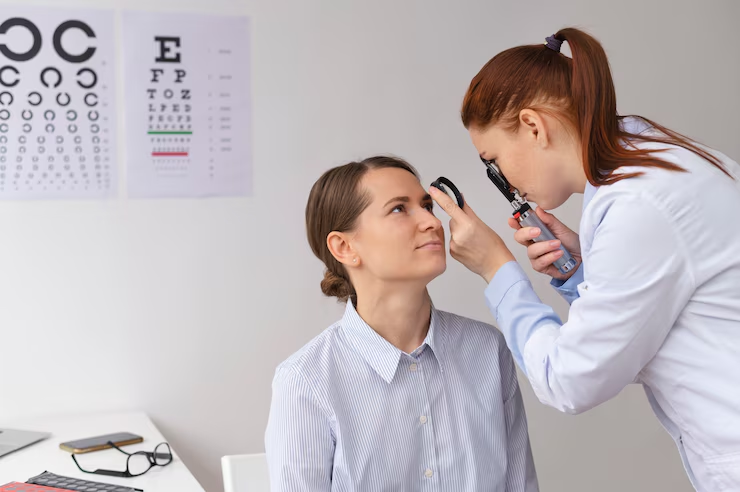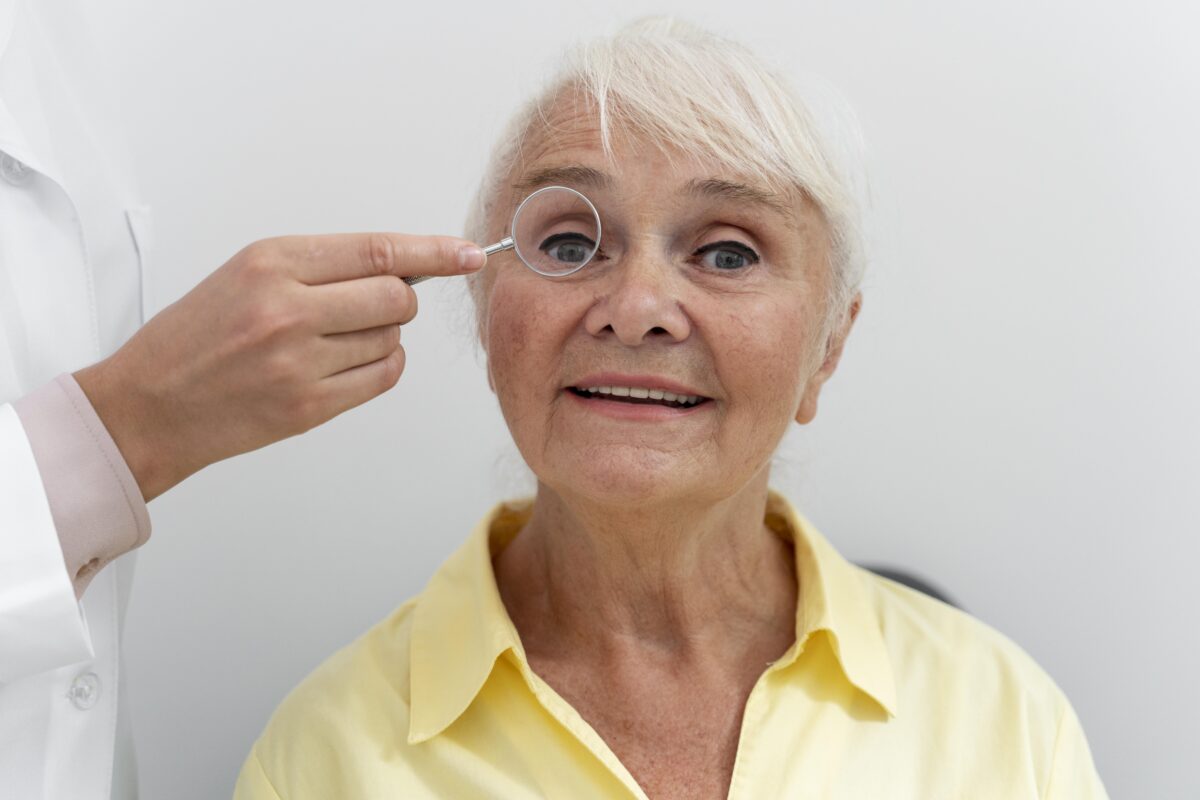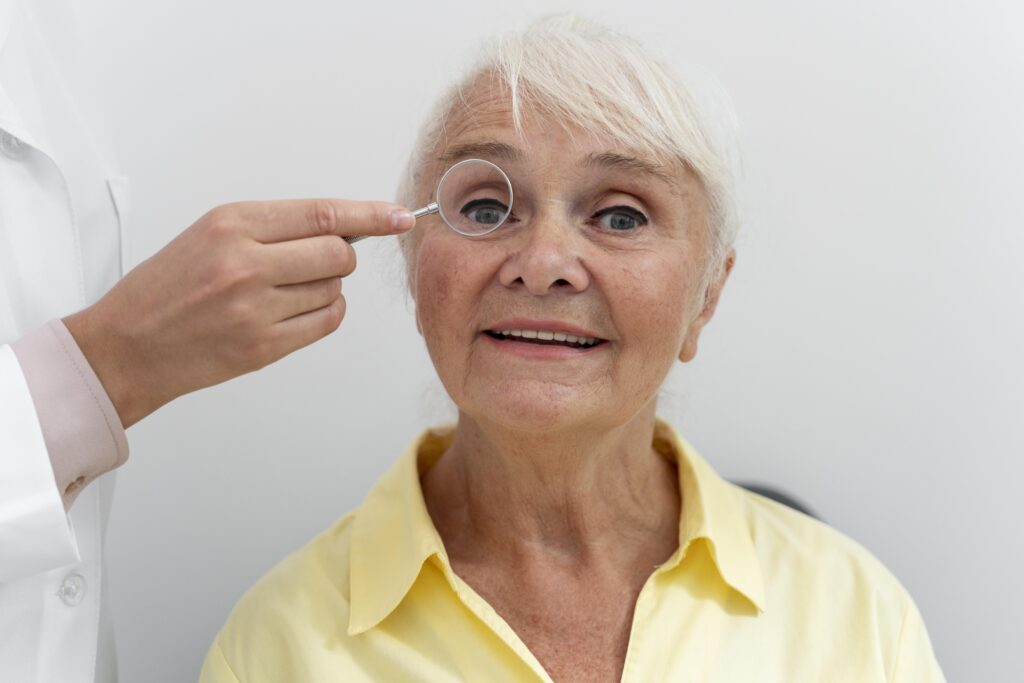Is Your Vision Changing? Signs You Need to Visit an Eye Doctor
December 5, 2024
Have Any Questions?
Please contact us, if you have any queries
Categories

Our vision is essential to engaging fully with the world around us. It enables us to read, work, explore, and experience life’s myriad of colors and shapes. However, as we age and navigate various life stages, our eyesight can undergo gradual changes that may go unnoticed until they significantly impact our quality of life. Recognizing the signs of changing vision is crucial not only for maintaining good eye health but also for ensuring that you can continue enjoying your daily activities without interruption.
Here are some signs that it may be time to schedule an appointment with an eye care professional for expert eye vision treatments
Blurred or Distorted Vision
One of the most common signs that your vision may be changing is experiencing blurred or distorted vision. This can manifest as difficulty focusing on objects at varying distances, leading to complications when reading, watching television, or driving. You might notice that your vision improves a little after resting your eyes or changing your focus, but if the blur persists consistently, it could be indicative of a refractive error, such as myopia (nearsightedness), hyperopia (farsightedness), or astigmatism. In some cases, blurred vision can also be a symptom of more serious conditions like cataracts or diabetic retinopathy.
Tips for Management:
- If you find yourself squinting or struggling to see details clearly, it’s time to consult an eye doctor.
- Ensure that you have eye protection against glare and bright lighting, especially when driving or working on screens.
Frequent Headaches
Frequent headaches, particularly those localised around the eyes, can be another warning sign of changing vision. Straining to see clearly can lead to significant discomfort, muscle tension, and persistent headaches. This may be due to uncorrected vision problems or an imbalance in how your eyes work together, known as binocular vision dysfunction.
Tips for Management:
- If you experience recurring headaches, particularly after extended periods of reading or screen time, consider scheduling an eye exam.
- Note the times of day and activities that trigger your headaches, as this information can be helpful for your eye doctor.
Increased Sensitivity to Light
Sensitivity to light, or photophobia, can affect how comfortably you engage with your environment. If normal lighting feels too harsh or causes discomfort, it may indicate changes in your eyes or underlying conditions. Conditions such as cataracts, dry eye syndrome, or migraines can increase light sensitivity.
Tips for Management:
- Wear sunglasses with UV protection outdoors, even on hazy days, to lessen glare.
- Discuss your symptoms with an eye care provider to determine if you need further evaluation.
Trouble Seeing at Night
If you notice that it’s becoming more difficult to see clearly in dim lighting or at night, this could be an indication of a common vision problem known as night blindness. Conditions like cataracts or retinitis pigmentosa can impair night vision. Changes in how your eyes adapt to darkness can make nighttime driving or navigating dimly lit spaces hazardous, increasing the risk of accidents.
Tips for Management:
- Avoid driving at night if you find it challenging to see clearly.
- Schedule an appointment with your eye doctor to evaluate your night vision and discuss potential solutions.
Changes in Color Perception
A gradual decline in how you perceive color can signify underlying vision issues. If colors appear duller or you have difficulty distinguishing between similar hues, this may indicate a problem with your retina or the optic nerve. Conditions such as color blindness, macular degeneration, or cataracts can affect color perception.
Tips for Management:
- Pay attention to how you view colors in various settings, particularly without strong lighting.
- Report these changes to your eye doctor during your next visit.
Floaters and Flashes of Light
Seeing floaters or flashes of light in your field of vision can be surprising and concerning. Floaters appear as specks or cobweb-like shapes that seem to drift across your field of vision. Flashes of light can occur when the retina is irritated or stretched, especially in cases of retinal detachment.
Tips for Management:
- If you suddenly notice a significant increase in floaters or flashing lights, seek immediate attention from an eye care professional, as this may indicate a serious condition.
Difficulty with Visual Tasks
Are you struggling to follow objects in motion, or do you have a hard time reading small print? Whether it’s pursuing hobbies, performing tasks at work, or simply enjoying a book, difficulty completing visual tasks can be a clear indication of changes in your eyesight. This could be due to age-related changes, refractive errors, or other eye-related health conditions.
Tips for Management:
- When you find getting tasks done becomes frustrating, this is typically a signal for a comprehensive eye exam.
- Consider using magnifying devices or tools to assist with short-term tasks until you can consult an eye care professional.
Eye Fatigue and Discomfort
Feeling fatigued or experiencing discomfort in your eyes after prolonged use can point to issues requiring attention. Long hours spent in front of screens can lead to digital eye strain, characterized by dry eyes, fatigue, blurred vision, and headaches. This syndrome, coupled with blue light exposure from screens, can exacerbate discomfort.
Tips for Management:
- Follow the 20-20-20 rule during screen use: every 20 minutes, look at something 20 feet away for at least 20 seconds to reduce eye strain.
- Ensure you are taking frequent breaks and practicing good screen hygiene during extended screen time.
History of Eye Conditions
If you have a family history of eye diseases such as glaucoma, macular degeneration, or diabetic retinopathy, it’s essential to be proactive about eye health. Individuals with a family history are often at higher risk of developing similar conditions and should monitor their symptoms closely.
Tips for Management:
- Keep an open dialogue with your eye doctor about your family history and any symptoms you may experience.
Conclusion
Vision changes can occur subtly over time, often allowing individuals to overlook potentially concerning symptoms. However, awareness and proactive measures can make all the difference in safeguarding your eyesight. Regular eye exams are the best strategy for early detection and treatment, ultimately preventing the progression of eye disease.
At Dr. Rani Menon Maxi Vision Eye Hospitals, we believe in providing comprehensive and preventative care to ensure that your vision remains sharp. If you notice any of the signs mentioned above or have any concerns regarding your eye health, we encourage you to make an appointment with us. Our dedicated team is committed to delivering the highest quality treatment possible to protect your eyesight and enhance your overall well-being.






